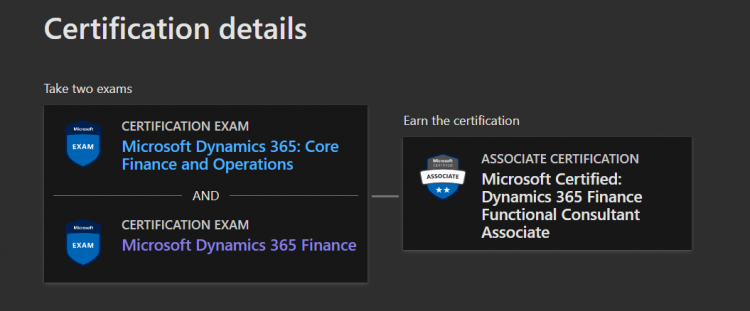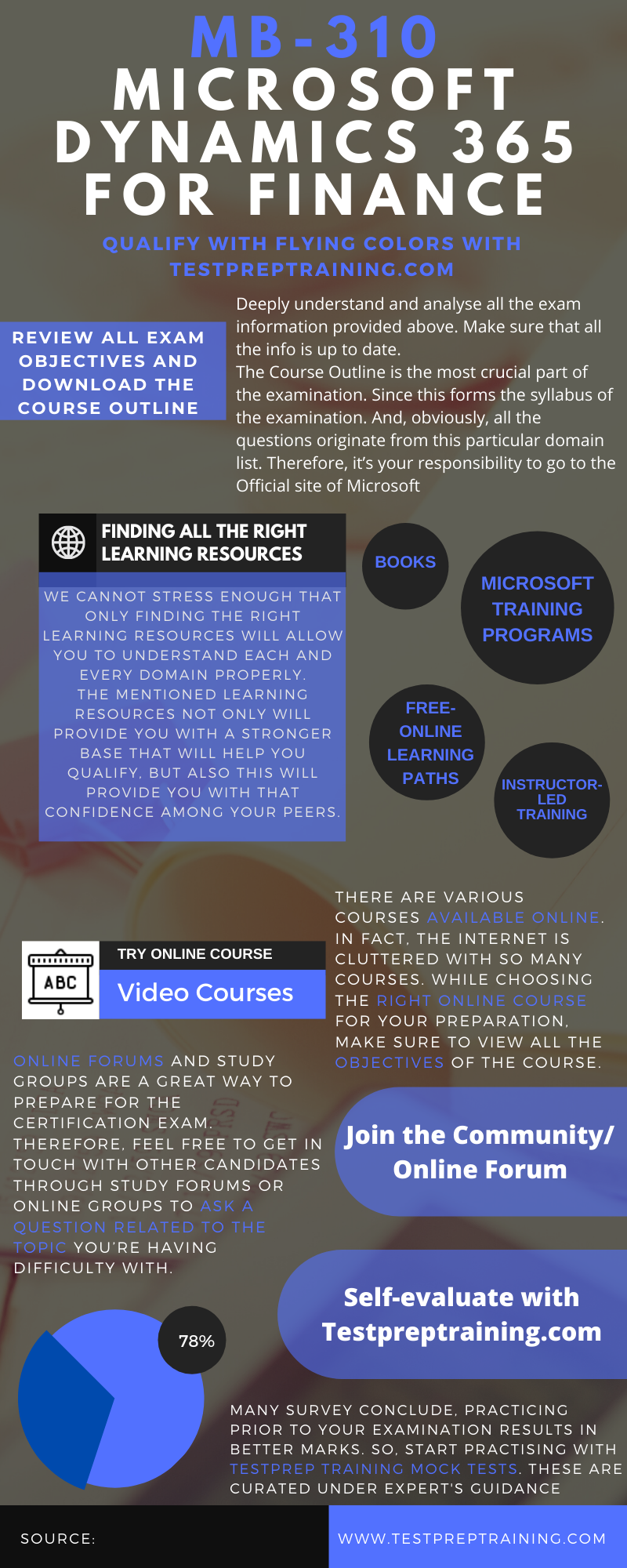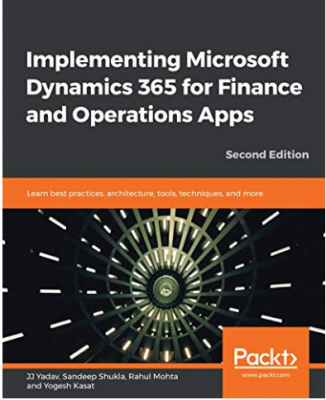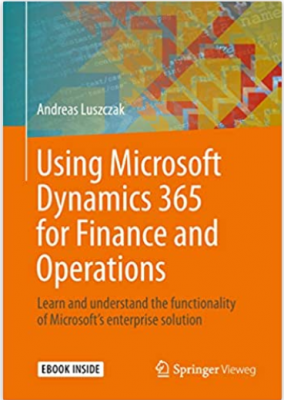The Microsoft MB-310 exam also known as the Microsoft Dynamics 365 for Finance and Operations is all about finance. It’s important for candidates who want to set up and adjust programs to meet a company’s requirements. To assist you in your preparation, we’ve created a Study Guide. Once you pass the MB-310 exam, you’ll be able to do the following technical tasks:
- Firstly, Setting up and configuring financial management
- Secondly, Managing and applying common processes
- Thirdly, The candidate will be able to implement and manage accounts payable and receivable
- Also, Managing, budgeting and fixing assets.
Intended Audience MB-310:
The Microsoft Certification MB 310 is designed for the following list of candidates-
- Firstly, Functional Consultants are professionals who look at business needs and turn them into complete business processes. They also create solutions that follow the best practices in the industry. Additionally, they need to set up and adjust applications to meet business needs.
- Secondly, candidates should have a basic understanding of accounting principles and how businesses handle finances. They should also be familiar with customer service, field service, manufacturing, retail, and supply chain management concepts.
- Thirdly, Candidates who specialize in more than one feature sets of Microsoft Dynamics 365 Finance, including finance, manufacturing, and supply chain management.
Prerequisites MB-310 Exam:
One must have a clear idea of prior knowledge and experience he/she must possess. For Microsoft Exam MB-310-
- A candidate must have knowledge of basic accounting principles and practices.

A step by step Preparation Guide to qualify MB-310 exam
Covering every detail of preparing for a certification exam would require more than just one article. To increase your chances of passing the MB-310 certification, use our carefully crafted MB-310 Study Guide. It will serve as your step-by-step plan to succeed on the exam.

STEP 1: Review all the MB-310 Exam Info
Take it from the professionals here: when studying for certification examinations, don’t overload your brain with too many questions. Furthermore, cleanse your mind first. The next stage is to thoroughly comprehend and analyze all of the exam content presented previously. Make certain that all of the information is current. Familiarising with the exam details plays a very significant role in your preparations.
STEP 2: Thoroughly go through the Course Outline
Now that you’ve learned about the exam details, let’s move on to the next step. It’s important to review the Course Outline and make sure you understand it well. The Course Outline is the foundation for all Microsoft MB-310 test questions. So, it’s your responsibility to visit Microsoft’s official website and examine it. The exam covers the following MB-310 topics:
Set up and configure financial management (40–45%)
Define and configure the chart of accounts
- Describe use cases for financial dimensions
- define and configure the chart of accounts and main accounts (Microsoft Documentation: Configure chart of accounts in Dynamics 365 Finance )
- describe use cases for main accounts categories, ledger account aliases, and balance control accounts
- configure legal entity overrides for financial dimensions and main accounts (Microsoft Documentation: Legal entity overrides )
- Configure and manage account structures and advanced rules
- Configure financial tags
- Configure derived dimensions and financial dimension default templates
Configure ledgers and currencies
- Configure batch transfer rules
- Configure currency exchange types and rates
- Configure a currency revaluation posting profile
- Configure and import exchange rates by using the exchange rate provider
- Configure accounting and reporting currencies
Implement and manage journals
- Configure journal names and vouchers (Microsoft Documentation: Configure ledgers and journals in Dynamics 365 Finance)
- Configure journal controls and posting restriction rules (Microsoft Documentation: :Set up posting restrictions )
- Implement journal workflow approvals
- Configure and use periodic journals
- Configure and apply accrual schemes (Microsoft Documentation: Create accrual schemes )
- Configure intercompany accounting (Microsoft Documentation: Intercompany accounting setup)
- Create templates to edit journals in Microsoft Excel
- Reverse financial transaction entries
- Configure default descriptions
- Create and use journal entries, including validation and posting
- Configure batch processing of journals
Implement and manage cash and bank
- create and manage bank groups and bank accounts (Microsoft Documentation: Cash and bank management )
- Configure payment formats
- Configure bank reconciliations, including advanced bank reconciliations (Microsoft Documentation: Set up the advanced bank reconciliation import process)
- Configure the cash flow forecast setup, including automation setup
- Perform bank foreign currency revaluation
- Process manual and advanced bank reconciliations
- Configure shared payment setup for customers and vendors
Perform periodic processes
- Design and configure periodic closing processes and end-of-year processes, including main accounts and templates
- Perform financial consolidation and elimination processes by using Consolidation online (Microsoft Documentation: Consolidation and elimination)
- Create and manage financial reports, including modifying row, column, and report definitions, and reporting trees
- Design and configure financial period workspaces and closing schedules
- Design and configure legal entity for consolidation and elimination by using Consolidation online
- Design consolidation and elimination by using financial reports
- Configure and process ledger settlements
- Perform general ledger foreign currency revaluation
- Manage the ledger calendar
Configure, collect, and report taxes
- Configure tax groups, tax codes, settlement periods, and authorities
- configure tax ledger posting groups
- Settle and post sales tax
- Configure withholding tax groups, tax codes, and authorities
Implement accounts receivable, credit, collections, and subscription billing (15–20%)
Implement and manage accounts receivable
- Configure customers and customer groups, including configuring shared customers
- Configure and process free text invoices, including recurring free text invoices (Microsoft Documentation: Key tasks: Free text invoices)
- Process sales order invoices and credit memos
- Configure customer payment methods (Microsoft Documentation: Establish customer method of payment)
- Configure accounts receivable charges and apply changes to an invoice (Microsoft Documentation: Configure accounts receivable in Dynamics 365 Finance )
- Manage customer holds
- Configure customer posting profiles
- Process customer payments
- Configure customer change approvals
- Perform accounts receivable foreign currency revaluation
- Configure and use billing classification
- Configure batch processing of free text and sales order invoicing
- Configure bank accounts for customers
Manage credit and collections
- Configure credit management processes
- Configure collections management processes, including collection activities
- manage delinquent customers (Microsoft Documentation: Documentation: Process credit and collections in Dynamics 365 Finance )
- prepare and send customer account statements (Microsoft Documentation: Send customer account statements by using email )
- Configure and process collection letters
- Configure aging definitions and process aged balances
- Process and manage credit holds
- Configure and use customer write-offs
- Configure and process interest notes
Configure and manage subscription billing
- Generate sales documents by using billing schedules
- Manage billing schedules, including price update and hold termination
- Configure contract billing, including billing schedule group, item group, and milestone setup
- Configure and use revenue deferrals and recognition, including for charges, deferral defaults, and items deferred by default
- Configure and use expense deferrals and recognition
- Process and manage revenue and expense recognition schedules
Implement and manage accounts payable and expenses (10–15%)
Implement and manage accounts payable
- Configure invoice validation policies and invoice matching setup (Microsoft Documentation: Set up vendor invoice policies)
- Configure vendor groups, vendors, and vendor posting profiles, including configuring shared vendors
- Process purchase order invoices and credit memos, including prepayments
- Configure vendor payment methods (Microsoft Documentation: Vendor payment overview)
- configure accounts payable charges and apply changes to an invoice (Microsoft Documentation: Configure Accounts payable in Dynamics 365 Finance)
- Configure bank accounts and bank account approvals for vendors
- Configure vendor change approvals
- Perform accounts payable foreign currency revaluation
- Configure vendor invoice automation
- Process the vendor invoice journal including voyage cost
- Configure and use recurring vendor invoices
- Process and generate vendor payments, centralized payments, and prepayments
- Manage vendor holds and inactivation
Configure and use expense management
- Configure expense management including categories, per diem options, mileage expenses, intercompany expenses, and personal expenses (Microsoft Documentation: Expense management overview)
- Create and manage expense reports (Microsoft Documentation: Expense report entry )
Manage budgeting (10-15%)
Implement basic budgeting
- configure budgeting components including budget models, codes, allocation terms, and transfer rules
- Create and manage budget register entries (Microsoft Documentation: Registry Scripting)
- Compare budgeted values with actual values
Configure and manage budget controls
- Configure budget controls including budget parameters, budget fund availability options, budget control rules and groups, and over-budget permissions
- Perform budget checks on documents and journals
- Configure budget cycle time spans
- Activate or deactivate budget control configurations
Manage fixed assets (10–15%)
Implement and manage fixed assets
- Create and manage fixed asset groups and other fixed asset attributes
- Configure fixed asset posting profiles
- Configure fixed asset parameters
- Configure fixed asset books
- Configure depreciation profiles
- Create and manage fixed asset
- Configure mapping for fixed asset groups and books
Process fixed asset transactions
- Process fixed asset disposal (sales) by using free text invoices
- Process fixed asset acquisitions by using purchase orders, journals, inventory journals, and projects
- Create fixed asset budgets and transfer the budgets to the budgeting module
- Process fixed asset depreciation
- Process fixed asset disposals and other transactions by using the fixed asset journal
- Process fixed asset split, reclassification, and transfer
- Process acquisition and depreciation for derived books
STEP 3: Finding all the RIGHT Learning Resources
We want to emphasize how crucial it is to find the correct learning materials to fully grasp each domain. We’ll show you where to find the right learning resources. This not only builds a strong foundation for you to pass the exam but also boosts your confidence among your peers. So, let’s get started without any more delay.
– MICROSOFT Training Programs
If you’re new to certification exams, let’s introduce you to Microsoft Training Programs. Microsoft offers two ways to prepare for the exam: free online training and paid Instructor-led Training. You can choose to use one or both of these learning resources based on your preferences. To give you a better understanding, let’s look at each of them separately.
– FREE-Online Learning Paths
Microsoft provides these free learning paths to help candidates like you prepare. They are an excellent way to get ready for the MB-310 certification exam. There are 7 modules in these paths, each covering important topics from the exam. Plus, there are questions at the end of each module to test your knowledge. If you’re eager to learn, you should also consider the Instructor-led Training.
– Instructor-led Training
Let’s be clear: Microsoft’s Instructor-led Training is top-notch. And the benefits it offers are even more exciting. With Microsoft MB-310 Training, you can access classroom training whenever you want. So, if you have a busy schedule and are worried about missing out, you can schedule classes at your convenience. You can find both of these training and learning options on the Microsoft Portal without any trouble.
– BOOKS: Studying the traditional way!
From the very beginning of your study life cycle, BOOKS have always been around. They are the most beneficial learning resource here too. Here are our selected picks, that have helped many before you, so do check them out.


- Firstly, Microsoft Dynamics 365 for Finance and Operations: Learn and understand the functionality of Microsoft’s enterprise solution by Andreas Luszczak
- Secondly, Implementing Microsoft Dynamics 365 for Finance and Operations Apps by JJ Yadav, Sandeep Shukla
- Thirdly, Implementing Microsoft Dynamics 365 for Finance and Operations: Implement methodology, integration, data migration, and more by Rahul Mohta, Yogesh Kasat, JJ Yadav
STEP 4: Online Courses
If an applicant intends to enrol in an online course. Online courses are accessible in a variety of formats. In truth, there are a plethora of courses available on the internet. When selecting an online course for your preparation, make sure to review all of the course goals. These courses provide you access to online video study materials that are simple to understand. They’re an important aspect of your preparation process.
STEP 5: Join the Community/ Online Forum
Online discussion boards and study groups are fantastic for getting ready for the certification exam. You can reach out to fellow candidates through study forums or online groups if you have questions about a topic you’re finding difficult. But remember, it’s entirely up to you whether or not you want to join in. It’s a personal choice. These online communities also help you stay connected with others who are on the same journey as you. You can even ask questions about any challenges you’re facing.
STEP 6: Self-evaluation Time
A practise run or two, regardless of how you prepare for the Exam, might aid you in more ways than you would think. Using an MB-310 Practice Exam to diversify your study method and achieve the best potential outcomes on the real thing is a terrific way to ensure the best possible results. Analyzing your answers will help you find areas where you need to focus your efforts and will also reveal if you are on track to meet the exam goals. To enhance your confidence, remember to take many tests. Lets Start Practising Now with MB-310 Practice Test!
Catapult your career with advanced learning skills and expert tutorials on Microsoft MB-310 Exam. Prepare and become a Microsoft Certified: Dynamics 365 Finance Functional Consultant Associate!



